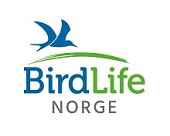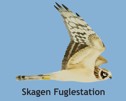
|
|
Tengmalm’s owl – Unpredictable at Lista?
By Aïda López This make us wonder if they have dispersed (spread out) quite a lot this winter. At Lista it is common to see and ring owls during the autumn, as some juveniles are forced to search for new territories with more food supply. Although in winter and spring it is uncommon to see them at Lista, we don’t know how abundant they are as we usually do not use playback for them in the spring. Many owl observations in the southernmost Norway and several owls caught at Jomfruland recently made us think there could be some around Lista as well. Their diet is based on small rodents -basically mice (genus Apodemus), voles and some lemmings-. Until now, rodent populations have increased and decreased every 3-4 years in boreal parts of Fennoscandia, which have made the owls to have a dispersal pattern every 3-4 years due to their periodical food availability. The dispersal is always higher on juveniles than on adults (natal dispersal) and it is higher on females than on males (breeding dispersal). Tengmalm’s adult males usually stay all year on the breeding areas protecting the territory, moving -short distances- if there is no food around. Females though, can be migrants if the breeding is unsuccessful or the food availability is low. Around 15% of them are nomadic (moving further than 100 km from the breeding area). Young owls stay in the breeding area when the number of rodents is very high. However, if the vole number is low, they mostly move far away (Geir A. Sonerud, Roar Solheim og Kristen Prestrud, 1988). More info: Ornis Scandinavica 19: 175-181 This explains why most of the owls ringed in non-breeding areas are mostly females or juveniles. Why do lemmings have a 4-year cycle? The Scandinavian rodent populations, especially the lemmings, were known to have a strong periodic cycles with peaks a every 3-4 years, but after the 1990’s these peaks became less pronounced and more irregular. In an interview with Science Nordic in 2012 Professor Nils Christian Stenseth -from CEES, the Department of Biology, University of Oslo- explains: “When the snow came in this part of the world, it used to be cold so it came down dry and soft, so that a small space could be built up by lemmings between the ground and the snow. And within that space, they could survive very well and they reproduced and built up a population that was high in the spring and couldn’t continue to be high if it didn’t crash during the summer.” He also says that when they crash, they crash to very low densities most likely because the predator population increases. So they crash to very low levels and it takes time for them to rise. And to build up very high densities, they need a period in which they are free from heavy predation and that's what they get during the snow, during the winter period, and it takes three to four years to build up such a population. But in the mid ‘90s, Nils C. Stenseth says, all this was gone and what the researchers found out is that the snow had changed from being soft and dry to being wet. Hence, the lemmings could not build up. In 2011, Nils C. Stenseth predicted that there would be a lemming peak all over Norway, as a matter of fact, all over Scandinavia because the previous year had been very cold, with very good snow conditions. And true enough, there was a lemming peak that year all over Norway. Why rodents are the key? When the lemming population crashes, all the ecosystem is affected. The vegetation grows more, there is more food availability for herbivorous and after the lemming peak there is also more predators. When there are no lemmings left, predators have to change their diet and go for other preys like Ptarmigan, Capercaillie and Black Grouse, adults, chicks and eggs are predated in higher numbers. What is going to happen this year? It is difficult to predict what is going to happen, but we know that last year there was a peak of lemmings in the mountains and other rodents in the Norwegian boreal woodlands. After the peak, there is always a crash, and the year after a crash (probably now) is when young owls have to fly longer distances to find a good territory than during increase vole years. Maybe that is why the Tengmalm’s and other Owls are more in Southern Norway this spring instead of remaining in the breeding areas. In autumn 2011, after a peak rodent summer, we ringed 204 Tengmalm’s Owls at Lista. Last year was also a peak year, but maybe not as pronounced as in 2011. We still expected tough to have a good number of Tengmalm’s in the nets last autumn, but got only 4 individuals during the whole season. A reason that could explain this is that after the large peak in 2011 there was an immediate(?) solid crash of rodent populations, so the Tengmalm’s had to leave the breeding areas in late summer/early autumn, with many migrating southwest and ending up in our nets at Lista. In 2014, the peak was smoother and maybe the crash came later, as we know that there have been rodents seen until late December. So maybe the final crash came during the winter and the owls were forced to explore southern areas during winter/early spring. Altogether it is still difficult to say. What we can promise, is that we are ready to open the nets to check how many other owls there are around. | |||||||

| Ringing numbers | ||||||||||||
|
| Reportasje fra Lista FS i Aftenposten |

|
| Seasonal deviation | ||||||||||||||||||||||||||||||
|
|
Følg Følg Lista FS på facebook.com |
| Siste 5 på siden |
|
Begynnerkurs i ringmerking: 17.-18. august The annual report for 2023 is available! Fuglefestival 2.-3. september Report from spring 2023 Ny rapport: Måling av elektromagnetiske feltstyrke fra fugleradar ved Lista fyr. |
| Nyheter fra NOF |
|
Ankerfjella IBA trues av... Kraftlinjer og vindmøller... Lille måltrost og den enda... Fine hekkeflåter til ternene... Statsforvalteren sier nei til... Hotell i særklasse Tusenvis av svarttrost: Hvor... Kulturlandskapsarten... |
Lista Fuglestasjon
Fyrveien 6
NO-4563 Borhaug
post@listafuglestasjon.no Tlf: 949 86 793
 |  |


 Only in English
Only in English



